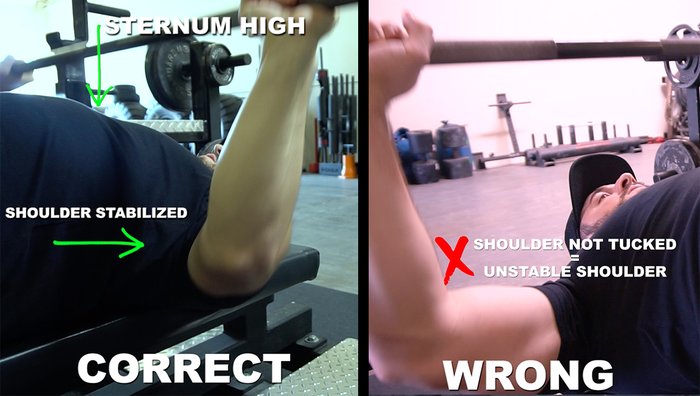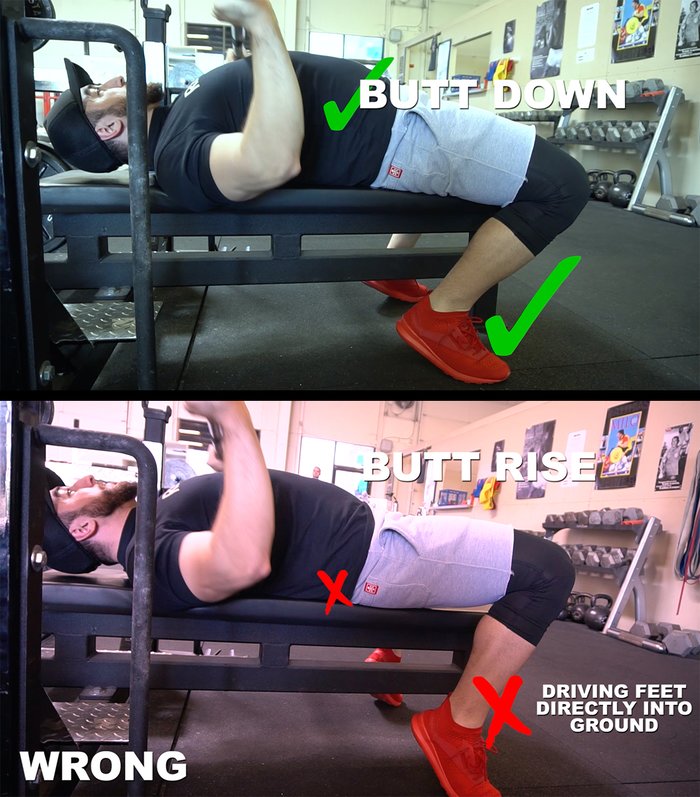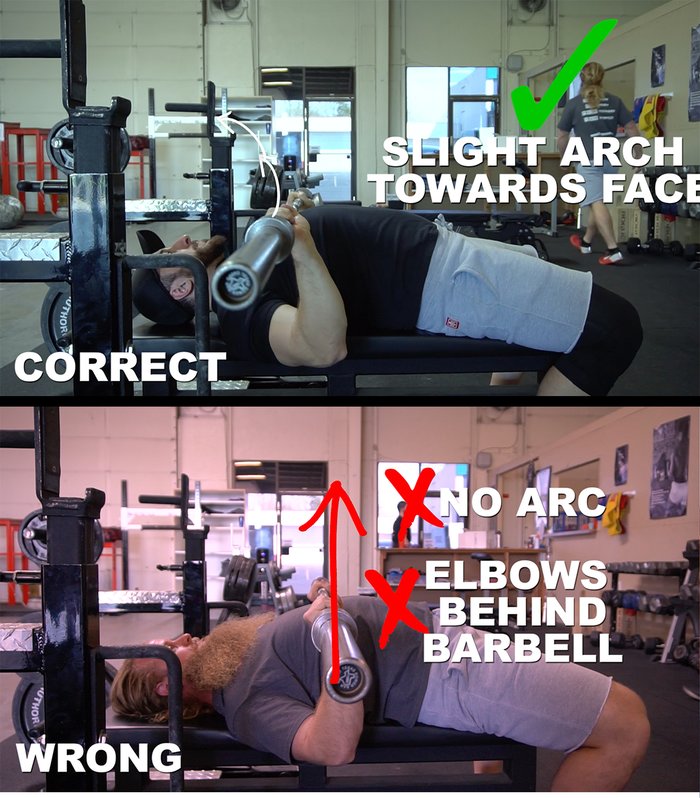Seasoned lifters know it's not "how much you bench" that matters, but just "how." If you want to watch your numbers—and your upper body—grow for years, rather than flaming out in pain and disappointment, you need to be ruthless about your technique.
1. You're Flaring Your Elbows at the Wrong Time
Some amount of elbow flare is inevitable in a powerlifting-style bench press. The issue is when it happens. If you start the press with your elbows flared, your lift is doomed from the start. It's also a very inefficient way to move weight. If your elbows flare at the end of the lift, that's a sign that your shoulders are losing their stable position in the joint, which is just as bad.
What to do instead: Both Mike and Alan are insistent that correct elbow position starts with your upper back.
"We want to keep our sternum high, shoulders tucked behind us," Mike says. "This is not only going to stabilize your shoulder, but it's going to allow for proper pressing using the proper muscles: our chest, shoulders, and triceps, while keeping the bar in the perfect path."

How to nail it: Drilling that technique is part of the answer. So is doing a lot of band pull-aparts.
"Start from a width the same as your bench press," Alan says. "Pull until it touches your chest. This should give you the sensation of pulling your shoulder blades together and keeping a tight upper back to support you while you bench. You can also do this with a cable machine."
2. Your Leg Drive is Driving in The Wrong Direction
Mike says leg drives can be a bit "overrated," and you only need to watch a few online PR videos to see why. Plenty of lifters act like the legs are lifting the bar, when it's more like they're just pushing you into a position where your real pressing muscles can take over.
If your butt is coming off the bench on max-effort reps—or any reps at all—then you're guilty here.
"This is incorrect, inefficient, and if you're a powerlifter, it's a red light," Alan says.
What to do instead: The goal with a leg drive is to push you onto your traps and the solid foundation of your upper back. This requires a more horizontal angle. Rather than driving your feet into the ground and keeping your butt up, drive your feet into the front of your shoe, and drive your toes into the ground as if you were doing a leg extension out in front of you.
How to nail it: Mike gleaned this tip from all-time bench great Eric Spoto, and says it worked wonders for him and countless others.

"Once you unrack the weight, flex your legs about 80 percent. You're forcing toes through the front of your shoe, knees out, flexing those quads," he says. "Once you're on your way up, after the bar leaves your chest, flex that extra 20 percent and drive your legs 100 percent as hard as you can to keep that stability and keep yourself driving back onto your traps."
3. You're Pressing in a Straight Line
Powerlifting is all about efficiency, right? So why not pick the shortest and straightest route from chest to lockout? Because, unlike the squat and deadlift, that isn't actually the way to get the most out of your "main movers" of the lift: the chest, shoulders, and upper back.
What to do instead: To make the most of your strength and avoid anatomical vulnerabilities, you'll need to press with a slight arc. After the bar touches on your chest, press back over your face and toward the rack. If you've got your back locked down tight and leg drive dialed in, this should happen naturally.

How to nail it: Just how your arc ends up looking is going to be specific to your anatomy, and more specifically, your arm length. Some people will touch lower than others, and lock out higher than others, so you'll need to practice to find your best form.
"Touch near the nipple line, and drive back almost toward your chin. This is the way to press the most amount of weight, but also keep your shoulders safe," Mike says.
Put these technique tips to use with these chest exercises and read about our top chest exercises for building muscle.
